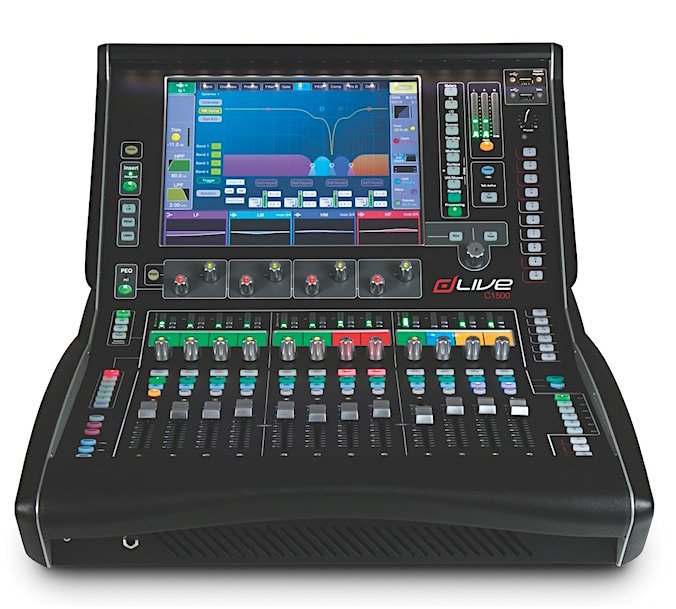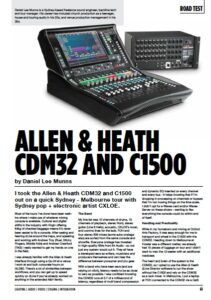News
16 Jul 2019
Road Test: Allen & Heath CDM32 + C1500
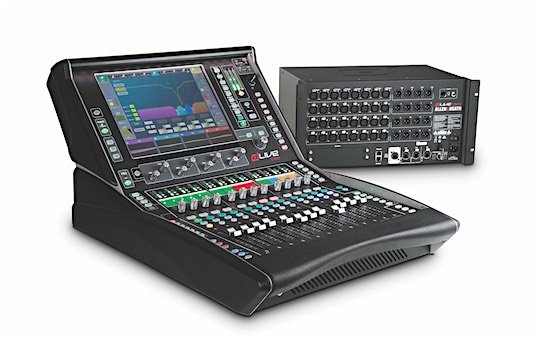
Subscribe to CX E-News
ROAD TEST
Allen & Heath CDM32 and C1500
by Daniel Lee Munns.
Daniel Lee Munns is a Sydney-based freelance sound engineer, backline tech and tour manager. His career has included church production as a teenager, house and touring audio in his 20s, and venue production management in his 30s.
I took the Allen & Heath CDM32 and C1500 out on a quick Sydney – Melbourne tour with Sydney pop + electronic artist CXLOE.
Most of the tours I’ve done have been walk-ins where I make use of whatever mixing console is available. Cultural and digital shifts in the industry with Virgin offering 64kg of checked baggage means it’s never been easier to fly a console.
After seeing and hearing dLive around the traps, and speaking and working with Andrew Troy (Ruel, Sticky Fingers, Middle Kids) and Andrew Crawford (TAG) I really wanted to get my hands on one in the field.
I was already familiar with the Allen & Heath interface through using a Qu-24 at a venue I work at and bulk corporate hours on GLD80. There’s a lot of similarities between workflows, and you can get up to speed quickly on dLive if you’ve already worked on anything in the extended A&H family.
The Band
My line list was 10 channels of drums, 10 channels of playback, stereo Nord, stereo guitar (Line 6 Helix), acoustic, CXLOE’s vocal, and comms lines for the lads. FOH and four stereo IEM mixes (some subs onstage also) are sorted from the same console and showfile.
Everyone onstage has invested in high-quality IEMs from 64 Audio – so not just any system would cut it. They all have a developed ears as writers, musicians and producers themselves and can hear the difference between prosumer and pro gear.
With a band who have keen ears (and are relying on click), latency needs to be as close to zero as possible. I was confident knowing the CDM32 runs at 0.7 of a millisecond of latency, regardless of multi band compression and dynamic EQ inserted on every channel and every bus – it helps knowing that if I’m dropping in processing on channels or busses that I’m not moving things on the time scale.
I didn’t opt for a Waves card and/or Waves Server on these shows – wanting to flex everything the console could do within and of itself.
Handling and Practicality
While in my hometown and mixing at Oxford Arts Factory, it was easy enough for me to transport and wheel in the C1500 with the CDM32. Heading down to Melbourne at Howler was a different matter; we already had 15 pieces of luggage on tour and I didn’t want to max the 12-seater with an additional roadcase.
The heart and brain of the system is the CDM32, so I opted to use the Allen & Heath dLive Director software to run the show without the C1500 and rely on the CDM32 as a rack mixer.
In Melbourne, I put a laptop at FOH connected to the CDM32 via a Cat5 run patched into a pretty standard MacBook Pro running dLive Director – I also walked the room with my iPad running dLive Mixpad. The showfile for the tour was pretty settled by this stage, and during the show it was just a matter of a few fader movements – Thursday night was Martin FOH and Friday night was L’Acoustics.
With the C1500 weighing 18 kg, with the right custom case, you’re good to fly. The CDM32 (a modest 10kg) fits a Pelican 1630, which it’s perfectly at home in.
Director Software
I downloaded dLive Director before I picked the console up getting to know the workflow over a coffee at TAG HQ. Director’s GUI just makes sense – while I would appreciate a little more polish in the appearance of the software, it’s all there.
Whether I’m processing, routing, or chasing a problematic channel, I’ve always been able to quickly figure out what’s going on. The ability to get real-time feedback on every channel via the software is invaluable.
During the show, I was running a digital split of separate channels for FOH and monitors. The software reflects the console – the right hand side has all of the soft keys which is where I’m usually going to do the things that keep the client happy!
Summing
I find the performance of any mixer is the ‘sum of all things’ or quite simply how it glues all your channels and busses together for the LR mix, or LRSF if you’re lucky – with the benchmark being noticeable separation andclarity when you really ask it to work.
The 96kHz sample rate doesn’t hurt. These days with Ableton taking the centre stage of many performances, clarity and separation is everything to me out front. When it comes to shows that are supposed to sound like the record, CXLOE commented that during one particular song section that’s basically a wall of sound in the bridge, she could still hear everything clearly – happy days.
EQ and Dynamics
I don’t personally use a lot of EQ or compression in the IEM mixes but I will respond to artist tastes – some like it clamped and others don’t.
I don’t believe in compression for compression’s sake – naturally the show is supposed to sound live but polished – artists now rely heavily on their musical directors or MDs (essentially those versed in the dark art of Ableton).
Toby Chew Lee from Day One Builds is heavily involved with CXLOE and her tracks and playback. He’ll spend weeks correcting and building arrangements, MIDI, triggers, levels, EQ, compression and sidechaining and customising the live playback rig itself.
In summary, we trust our MDs and music is generally better when it’s not crushed seven times and has some dynamic range before it reaches FOH or IEMs.
With the playback tracks, if they’ve been recorded five years ago the levels can be pretty different to tracks that were produced five weeks ago and the stems just handed over. Perhaps the artist’s production skills have evolved or a collaboration with Producer XYZ has yielded some massive highs or rolling sub bass on one track and not the next.
That’s where I use the DYN8 multiband compressor and dynamic EQ; I don’t have to limit, but if something’s sticking out I can deal with it without squashing the life out of the rest of the track.
Gotta love the DEEP Processing also. I’ve held onto some dbx 160as in my own analogue racks so it’s great to see them emulated. The CDM32’s EQs are all lovely, and I like that I can use the touchscreen on the C1500 or the encoders to control them.
I appreciate having both a high pass and lo pass on the channel strip, there is just so much music in the middle and I really need to vocal to own the high end.
FX
The included FX are stunning, just incredible. I use Waves H Verb or R Verb in other rigs (but I still haven’t sold my SPX990s), and I wasn’t missing them too much. Having 16 slots of this calibre ready to go is unbelievable.
When you’re doing monitors from FOH for an artist that has to have reverb, you can really dial in something special. The doublers (have to have with pop vocals) are also fantastic. The FX are just world class – they’ve nailed it.
Virtual Soundcheck
Virtual playback is really easy. I had a Dante card installed in the CDM32 and was running virtual soundcheck via Dante from Waves Tracks Live – I was up and running in no time. With VSC to build my show and dial it in, then going into pre-production, after two hours of rehearsal the band were happy. That’s all you can ask for.
dLive CDM32 – The Specs
32 mic/line inputs, 16 line outputs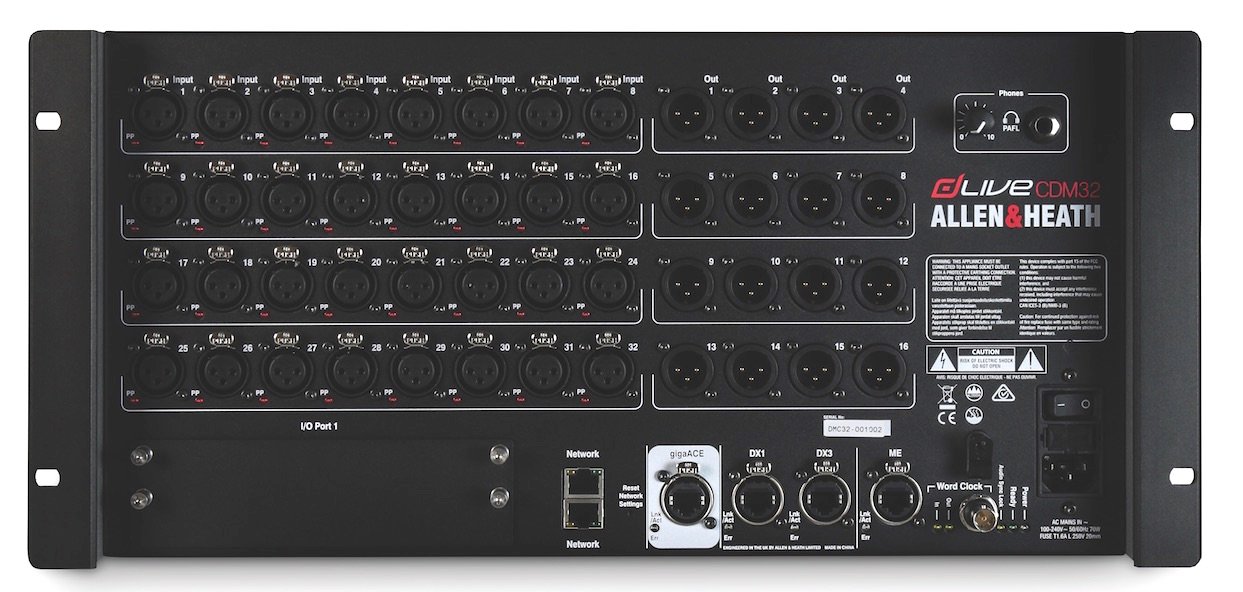
XCVI 160×64 FPGA core
96kHz sample rate
Latency – 0.7ms
128 Input Channels with full processing, 64 Mix Outputs with full processing
Configurable 64 bus architecture (group, FX, aux, matrix, mains), LR, LCR and up to 5.1 mains mode
Multiple PFLs
16 RackExtra FX with dedicated stereo returns
24 DCAs
AMM (Automatic Mic Mixer) up to 64 channels across 1, 2 or 4 zones
Built-in signal generator and RTA
gigaACE gigabit link to Surface, 2x DX links for I/O expansion, I/O Port (128 ch 96 kHz), dedicated ME-1 48kHz port, 2x Network ports, Wordclock BNC I/O
Hands-On with the C1500
The C1500 is a compact package – and shows like these really lend themselves to DCAs, using the spill function. There is an incredible amount of user defined soft keys on the console – one through four were for the artist’s IEM channels, five ready for a guest IEM, then tap tempo, mute all inputs, mute all outs, and FX mute.
There’s so much more you can do to customise the surface.
The C1500 has the best touchscreen I’ve ever used; it responds like a tablet; more capacitive than others. It’s big and it’s bright, smack in the centre and would punch through daylight with no problems.
Where possible and given the choice, I’d definitely opt for the C1500 surface or the C2500 – especially in timecode dependent shows where showfile is part of the performance. Having said that, I’d happily build a touchscreen rig with an IP8 and a mini pc running Director where compact touring is called for.
dLive C1500 – The Specs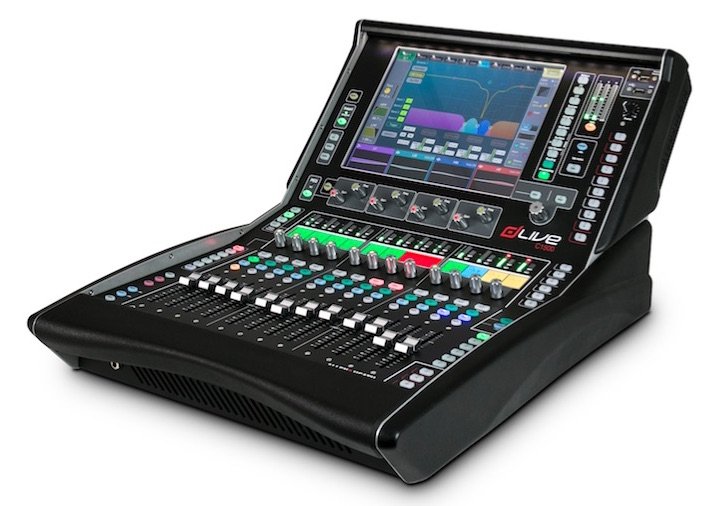
12 faders with fully assignable layout – 72 fader strips
12” capacitive touchscreen
Gesture control – pinch, swipe, drag ‘n drop
Dedicated multi-mode EQ view
Configurable widget areas for Scenes, meters, FX and more
19 assignable SoftKeys
Engineer’s Wedge and IEM fader strips
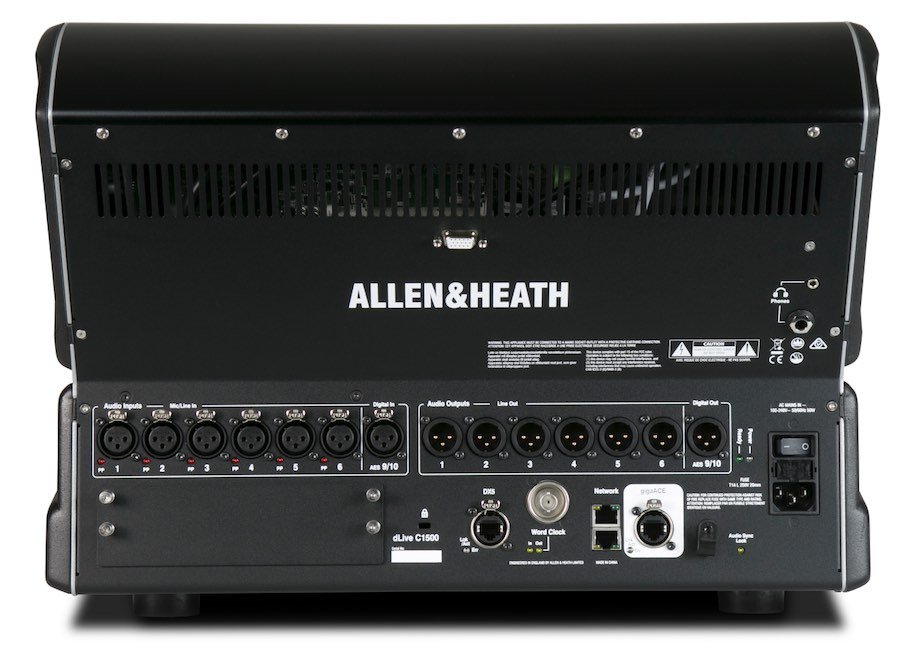 Comprehensive multipoint metering
Comprehensive multipoint metering
Daylight visibility
USB stereo recording and playback
6 XLR mic/line in, 6 XLR line out, 1 digital st AES3 in, 1 digital st AES3 out
Connection hub: GigaACE gigabit link to MixRack, DX link for I/O expansion, I/O Port (128 ch 96 kHz), 2x Network ports, Wordclock BNC I/O, Video output
Models: CDM32, C1500
Product Info: www.allen-heath.com
Australia: www.tag.com.au
New Zealand: www.jansen.co.nz
Thanks again to Andrew Crawford @TAG Brand: Allen & Heath
CX Magazine – July 2019 Entertainment technology news and issues for Australia and New Zealand – in print and free online www.cxnetwork.com.au
© CX Media
Subscribe
Published monthly since 1991, our famous AV industry magazine is free for download or pay for print. Subscribers also receive CX News, our free weekly email with the latest industry news and jobs.

